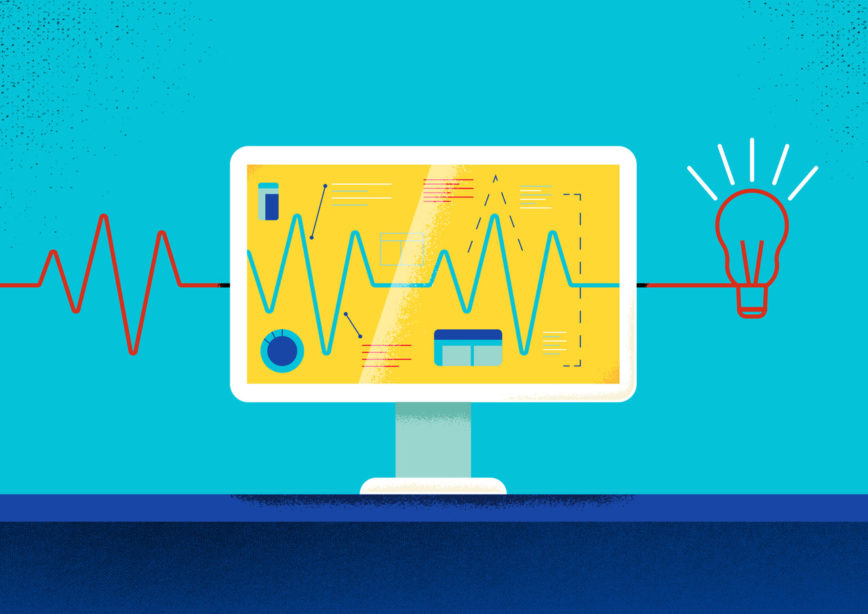When choosing a Holter software, it’s crucial to consider the specific needs of your practice. The right software can streamline your workflow, enhance diagnostic accuracy, and improve patient outcomes. Two key dimensions to consider from a product perspective are how the algorithm used for analysis was developed and how the software is deployed.
Rule-based vs. AI-based holter software
Rule-based Holter software operates on predefined algorithms and logic rules created by medical professionals and engineers. These rules dictate how the software processes ECG data, identifying patterns, detecting abnormalities, and generating reports based on established criteria. For example, a rule might state that if the heart rate exceeds a certain threshold for a specified period, the software should flag it as a potential arrhythmia.
- Pros:
- Predictability: The outcomes are consistent because the software follows strict, predefined rules.
- Transparency: Users can easily understand and verify how decisions are made.
- Cons:
- Lower real-world accuracy: Rule-based systems often struggle with real-world signals as those exhibit variations that don’t fit neatly into the predefined rules. This may translate into many false positive abnormality detections.
- Manual Updates: Any change in medical guidelines or discovery of new patterns requires manual updates to the software’s rule set, which need to be carefully tuned to the signal profiles of different devices.
AI-based Holter software leverages artificial intelligence and machine learning algorithms to analyze ECG data. Unlike rule-based systems, AI-based software learns from vast amounts of data, including diverse and complex cases, allowing it to identify patterns that might be too subtle or complex for rule-based approaches. The software can be improved over time as it is exposed to more data to refine its ability to detect abnormalities.
- Pros:
- High Accuracy: AI-based systems can often detect subtle or complex patterns that rule-based systems might miss, potentially leading to earlier or more accurate diagnoses.
- Robustness: AI-based systems can generalise based on complex statistical patterns found in the training data rather than applying first order rules. This allows them to be more robust to different types of signals, for example from different manufacturers or with noise.
- Adaptability: AI algorithms can be adapted to different types of signals or new clinical guidances and novel detectors can be created without needing to manually identify and fine-tune detection rules if sufficient training data is available.
- Cons:
- Opacity: AI algorithms, especially those using deep learning, can be seen as “black boxes” because they make decisions based on complex patterns that are not always easy to interpret or explain.
- Data Dependency: The effectiveness of AI-based systems depends heavily on the quality and quantity of the data they are trained on, which could lead to bias if the training data is not representative.
In summary, AI-based holter analysis software is best suited if you want to benefit from the highest real-wolrd accuracy and robustness without investing into manually cleaning-up and verifying the analysis. Rules-based analysis software is still the more suitable approach if you want to have full control on the criteria used for the analysis and also have the staffing necessary to do the additional clean-up and verification of the analysis needed.
Cloud-based vs. on-premise holter software
Cloud-based software operates entirely online, meaning that all data storage, processing, and analysis occur on remote servers maintained by the software provider. This model offers several advantages, including ease of access from anywhere with an internet connection, automatic updates, and scalability—making it ideal for practices with multiple locations or those that need to scale their services quickly. Additionally, cloud-based solutions often integrate seamlessly with other digital tools and platforms.
On the other hand, on-premise software is installed and run on local servers within your practice. This model works better in the areas where internet connectivity is unreliable. On-premise solutions typically involve a higher upfront cost for hardware and software but may have lower ongoing costs since you don’t need to pay for a subscription. However, they often require more IT support to manage and maintain the system, and updates need to be manually installed. Additionaly, on-premise installations are not necessarily more secure: achieving the same level of robustness and data security as cloud-based software requires substantial investments in redundancy, site protection, cybersecurity protections, etc.
Choosing between cloud-based and on-premise software depends on your specific needs. You can think of it as difference between Microsoft Word installed on your local machine or using Google Docs. To summarise:
- Cloud based software is the recommended choice for practices that have multiple locations or distributed teams, need to process large volumes or have limited in-house capabilities to setup, maintain and secure their IT infrastructure to incresingly stringent requirements.
- On-premise software is best suited for practices that are centralised in a single location or already have extensive in-house IT infrastrcuture and maintenance capabilities.
Summary
This table provides a quick overview of the capabiltiies of some Holter monitor software, helping you make a more informed decision based on the needs of your practice. The prices are based on officially available data and may differ depending on the market and specific deal with distributor or manufacturer.
| Feature | Analysis | Integration | Platform | Pricing |
| GE Healthcare CardioDay | Rule-based | Vendor specific |
On-premise | Floating licence. Approx. €5000 |
| Bittium Cardiac Navigator |
Floating licence. Approx. €5000 |
|||
| Schiller medilog DARWIN2 |
Floating licence. Approx. €4000 |
|||
| Aspel HOLCARD |
Dongle licence. Approx. €1200 |
|||
| Cardiomatics | AI-driven | Hardware agnostic |
Cloud-based | Scalable subscription starting from €100/month |

